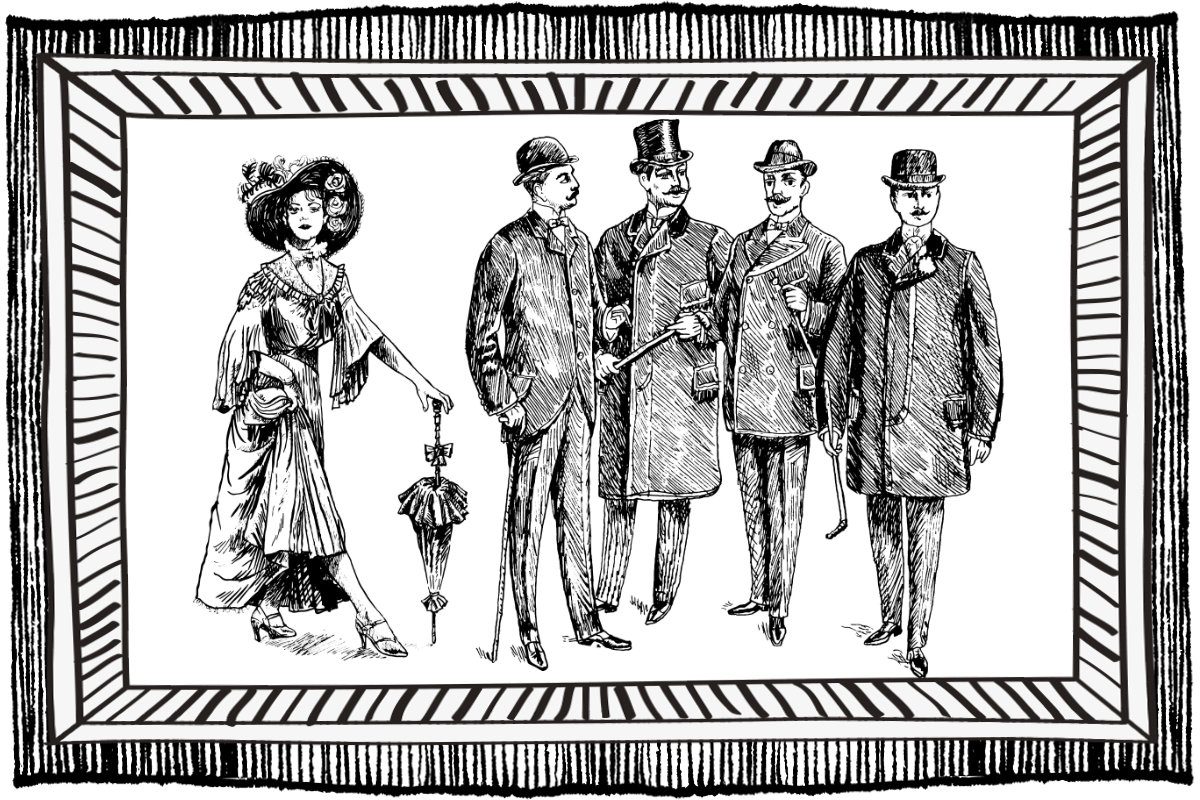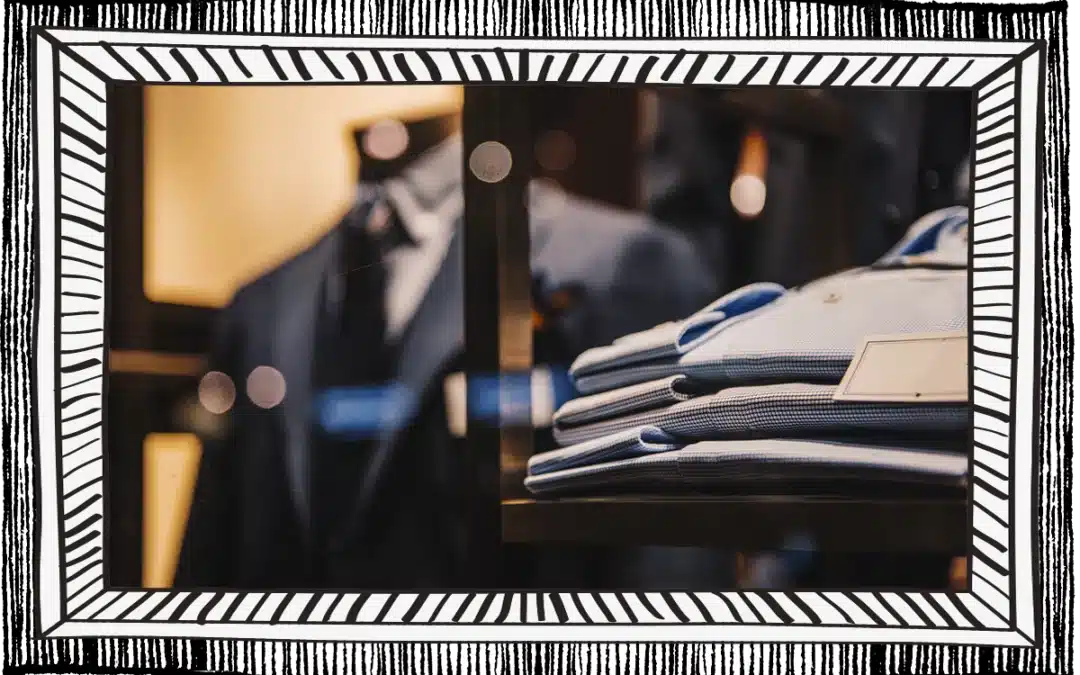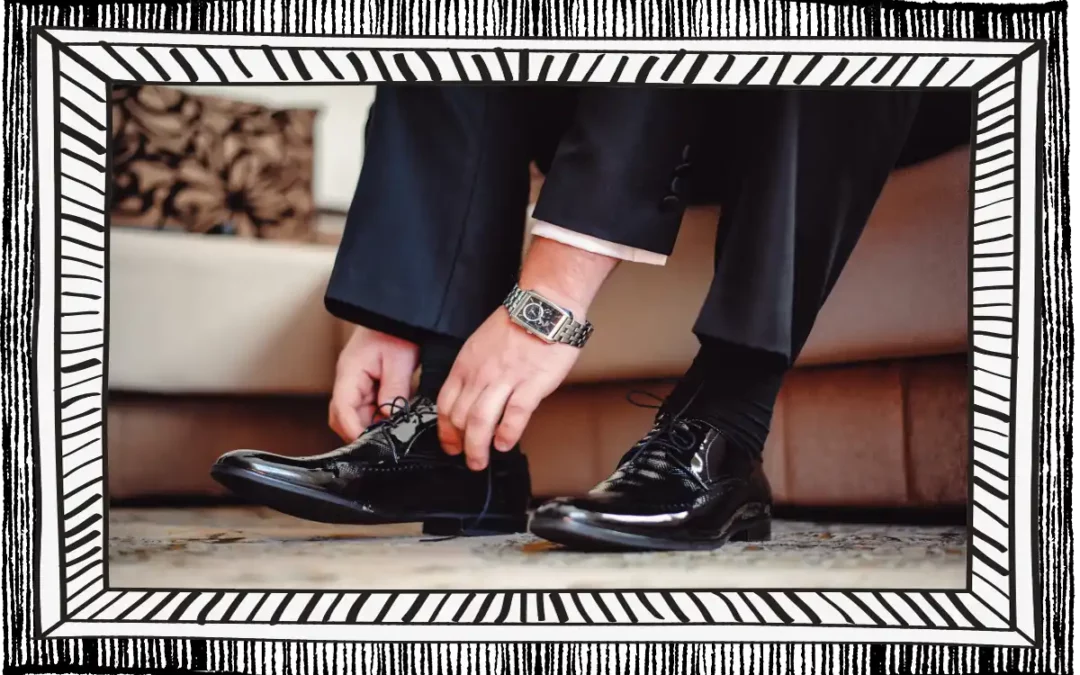Did the world’s oldest people know how to dress?
So did Homo Sapiens know how to sew? With the tools he’d made himself, yes. But that doesn’t mean he was making a collar when all he was trying to do was fit an animal skin around his neck. But we digress.
Assembly of animal skins among the Inuit
For this people, piecing together seal and caribou skins was an art that called for a certain level of expertise. Nothing was left to chance. Measurements would be taken from the person for whom the garment was intended. And the various pieces would be marked out right on the leather using a bone with a pointed end. Then an ulu would be used to cut the fabric, and sinew to sew it. The role of tailor is reserved for the women of the clan.
The technical nature of sewing animal skins and the wish to achieve a made-to-measure fit both indicate that even back then, clothing was considered apparel, utilitarian though it was.
Accessories have been used for 100,000 years
Making oneself look presentable is a concern that has existed for as long as Homo Sapiens has. Shell necklaces have been found in Africa, and it is thought that Neanderthals used paint pigments to colour and decorate their skin. This is relevant, since body paint was the only form of skin decoration among aborigines, who lived stark naked until colonisation occurred.
The wearing of accessories is indisputable proof thataesthetics and the habit of taking care of one’s appearance existed as soon as man started to take on his modern appearance.
The Greeks, Romans or Egyptians: who were the real ambassadors of sartorialism?
Fashion in Roman times
Dress was a social marker for the Romans. You could tell whether a woman was married or single by nothing more than her belt. You could tell a man’s social status by the fabric of which his toga was made. The materials of choice were wool and linen.
Fashion was reflected in hairstyles (wigs were already being worn), in the jewellery that adorned arms and legs, and in shoes that were embroidered and beaded.
Fashion in Greek times
The Roman toga was to the Roman Empire what the chiton was to the Hellenic Empire. This large, standard piece of fabric, often made of wool, would be worn by both men and women to cover the front and back of the body. It was through women and their fondness for accessories, then thanks to the cultural enrichments from the Middle East, that diversity was to appear. Not least in textiles, with silk processing, and leather processing for shoes and belts.
Fashion in Egyptian times
As the climate did not allow for a wide range of outfits, the wardrobe would consist mainly of linen garments – a simple kilt for men and a loose-fitting garment for women. The finery essential to Egyptian beautywas made up of jewellery. Often made of gold and precious stones for the wealthiest, and for each part of the body, the finery reflected social status. The Egyptians brought us eye make-up, and this long line of kohl actually acts as an antibacterial agent. Women would apply make-up to their lips and cheekbones, and take scented baths. All this dress and finery have continued toinspire designers such as Madeleine Vionnet, who is known for her sculptural pleated dresses in a style imitating Greek dress, which are still found in the wardrobes of ladies from all walks of life.
Who are the ambassadors of sartorialism in the 21st century?
A legacy from the 19th century, from the English, the sartorial persuasion resonates among a few names, all belonging to men. Dressing gentlemen in elegant fashion became the business of other men of good taste.
Gianni Agnelli: the first men’s fashion influencer
The heir to the Fiat corporation has kept every tailor in the world in work. The traditional made-to-measure suit was his favourite apparel, but he was exuberant with it, and made his mark on his era with his skill when it came to quirky details. Agnelli is a fashion benchmark. It’s about wearing one’s watch over one’s sleeve. And wearing one’s tie over one’s jumper. He was the first to undo shirt buttons to portray a new, practical kind of lifestyle. He was the first to wear trainers with a suit. And to use his image to create a persona that sticks in the mind, though always in the upper echelons.
Tom Ford: the charm of the man and the garment
This man has the status ofambassador of sartorialism and represents the United States.
Thanks to the resurrection of the crimson tuxedo for Gucci, his involvement in the Rive Gauche show for Saint-Laurent and then, on his return to the USA, his runway show suggestions, the man has received multiple awards from his peers. Even if though ideas for outfits did not always meet with success.
Alessandro Squarzzi: Thrice nominated among the world’s best-dressed men
Here is our ambassador for Italy. This fashion entrepreneur is also a clothing collector. He’s dandyism personified. He may wear a suit and tie depending on the occasion, but he likes to go for his favourite basic outfit: jeans and a white T-shirt. True luxury is about breaking with convention to restore meaning to the basics with elegance.
Justin O’Shea: wearing a three-piece suit as a man with tattoos
It’s normal for him to go to the tailor’s. His shirts are bespoke, his beard is in a hipster cut and his body is covered in tattoos. He is a sartorial star who worked as an artistic director and fashion buyer before launching his own men’s line.
You could be forgiven for wanting to pull off that same sartorial style. Well now you can, thanks to his own collection.
Hugo Jacomet: the man who says it best
Through his blog on elegance for men, Jacomet provides a forum for all sartorial design contemporaries. Passionate about the art of tailoring and also that of bootmaking, he is also the author of three bestsellers and is building a community of aficionados who will be helped by what they read. Ambassadors of refinement and good taste.
The marriage of tradition and modernity
This is the very essence of sartorialism. Men’s elegance is expressed through sartorial arts, skilfully blending the rough and the smooth, sophistication and simplicity. This is the treasure that time has bequeathed to us.




